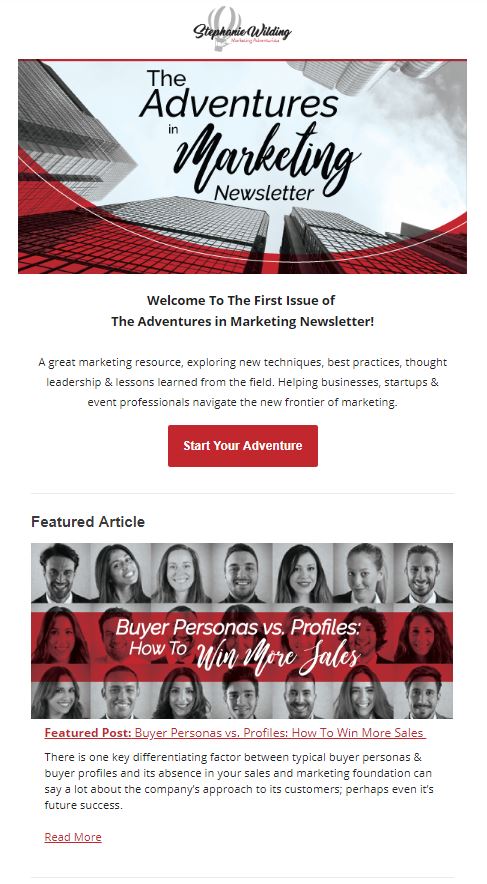Audience Segmentation: How To Build A Foundation of Success

We’ve all experienced it – looking through our email or scrolling through the feed of our favourite social networking site and we come across a message that is so far out there, so disengaged from our interests, situation or who we are as a person/consumer/purchaser that we are left wondering “how did I get on this mailing list?” or “ how can I adjust the ad settings on my feed?”. The situations that lead to those emotional responses are prime examples outlining the importance of audience segmentation.
In a world where users are so connected to our communications (carrying them around in their pockets or purses in most cases), and every brand is competing for relevancy, constantly working to make a lasting connection, a mistimed or tone-deaf message can actually cost you that prospect. It no longer matters what your direct competition is doing; you are now competing for attention as much as you are for market share along with every business targeting the same prospects, regardless of industry.
Gone are the days where you will find success using a blanket or one size fits all, marketing approach. In this highly technical era, people expect a customized, personal experience and anything short of this will fall flat.
The bar has been raised and there is no going back now.
However, not all is lost, by embracing technology and the advancements being made, you can achieve the brand experience your prospects and customers are expecting; audience segmentation is the first step. By identifying your audience and segmenting them through the various relationship stages and connections with your brand, you can build a foundation for success.
The Basics Of Audience Segmentation
Every product or service has a target market that consists of a group of people with certain demographics, geographic, and in B2B cases firmographics, all of which have a need or want that the product or services fulfills, and are ones most likely to make a purchase. Marketing automation platforms enable you to build these targeted audiences within the platform (also known as audience segmentation) and by doing so allows you to customize the digital marketing campaigns and/or touch points you reach them with.
Segmenting Your Audiences By Prospects & Clients
The next step would be to build audience segmentations within your database, further by splitting them into two groups, one made up of existing or past customers and the other of prospects who fit the target parameters but have yet to convert, allowing you to customize the tone within the messaging while building a personalized experience. This is achieved by communicating with them in a manner that directly reflects their current relationship with your company.
Audience Segmentation By Engagement
Through the use of marketing automation platforms, an additional segmentation has been added and is based on the engagement level of the users within your digital marketing campaigns. Let me explain, if someone has opened or clicked through on your emails, visited your website from a social post or ad, shared your content, or filled out a lead generation form, they are considered engaged, and are your “hot leads”. This is where your efforts should be focussed, as the revenue potential is highest with this audience, and will most likely be where you generate the majority of your revenue.
If you have been following along, you may have picked up on the fact that, this audience, depending on how you have built your database, only makes up a sliver of your total records within it. And the thought of spending the majority of your efforts on such a small percentage of your captured audience is frightening. Even more so when you factor in my statement that this is your highest potential for the majority of your revenue, you may be worried about the future of your business or perhaps my mental state, but the truth is we have never had such insight into the minds of our customers or prospects on a scalable level.
Typically account managers or sales representatives would be spinning their wheels, prospecting client lists or making the dreaded cold calls to fill their pipelines, never truly knowing the actual interest or engagement level until they close the deal or lose it.
Not in B2B? Think of the days where (could even be as recent as yesterday) you were hammering a mailing list with your best messaging, and promotions, only to receive mediocre results at best.
The reality is that the data we have collected, grow old over time; judging potential revenue by the total size of your database is a practice that will only lead to disappointment time and time again. I find it best to think of your database as a living organism, that is constantly changing, growing and adapting over time. People’s situations, circumstances, interests, and needs are constantly evolving, even if you generated the records in your database through specific demographic, geographic and firmographic targeting from reputable sources, they may no longer (for whatever reason) be a qualified lead, whether this is a reflection of your company or not. With this in mind segmenting by engagement will give you a clearer picture of what is actually in your pipeline, and allow you to focus your efforts on the audience that is your lowest lying fruit, in terms of generating revenue.
With the introduction of marketing automation, you can leverage technology to segment, target and nurture your most engaged prospects, in real time. In fact, if your marketing automation campaign is built correctly, engaged leads will progress naturally through the buying stages, qualifying themselves in the process. This is the ultimate dream and it is achievable, but there is no cookie cutter answer, and these campaigns will need to be optimized and refreshed over time. That being said this is still a very affordable method for small businesses to level the playing field; allowing them to compete with larger organizations who have higher marketing budgets and a deeper bench in terms of sales resources.
What Do You Do With The Non-responsive Audience Segments In Your Database?
Audience segmentation by engagement sounds great, but you may be wondering what to do with the rest of the records or cold leads in your database, do they just sit there? Well, marketing automation has a solution for that as well, in the form of re-engagement and reactivation campaigns. Essentially with these campaigns, you will be targeting the non-responsive segments of your database, working to re-qualify and re-engage them. This can be achieved by sending content that is more closely related to the reason they subscribed, to begin with, or introducing new and improved products or services. Reaching out to them with feedback surveys can give you insight as to why they stop responding, or you can also provide them a way to adjust their interest settings, which will account for any changes in circumstances or needs as required. Through these campaigns, the leads reached will begin to engage with your content and your marketing automation platform will automatically pull these reengaged leads into the nurture campaigns with the rest of your engaged audience; ultimately working to move them through the buying process.
Check out the final part of this series here: What is Personalization Code & How To Use It

